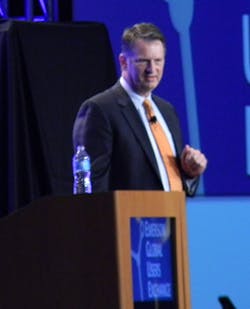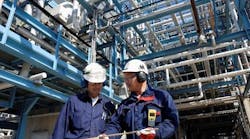Emerson Process Management hosted its annual Global Users Exchange in Anaheim, Calif. in Oct. The event, which attracted nearly 3,000 registered attendees, kicked off with a business update from Steve Sonnenberg, president of Emerson Process Management, and a technology update from Peter Zornio, the company’s chief strategic officer. While the focus of each keynote address was different, the underlying theme was the same—“How do end-users do more with less?” And while this has always been the high-level focus of process automation, the folks at Emerson believe the “do more with less” concept has never been quite so critical to the success of so many businesses.
Addressing the Skills Shortage
According to Emerson, today’s economics require that most process manufacturers have only the staff necessary to maintain efficient operations. This leads to what Emerson calls a “capabilities gap” when substantial new capital investments are undertaken or when maintenance requirements spike, as during a plant turnaround.
“The number of large automation projects for which we’ve been chosen—increasingly as main automation contractor—has dramatically increased in the past two years,” Sonnenberg said. “Many of these projects are in emerging markets, often focused on meeting critical infrastructure needs or developing natural resources. Not only do they require large amounts of engineering effort for design, commissioning, and startup, but once they’re up and running they need prompt, dependable support services to stay at peak efficiency.”
Citing a June 2012 study by McKinsey Global Institute, Sonnenberg noted during his keynote address that strains in the global labor market could lead to a shortage of up to 95 million high- and medium-skilled workers by 2020. As such, Sonnenberg said Emerson is investing heavily in human capital around the world and bolstering its service offering. As end-user companies continue to lose technical expertise every day, Sonnenberg said Emerson is committed to providing the service level and engineering support end-users will need to fill in their technical gaps.
Specific investments Sonnenberg highlighted during his keynote included:
- A 280,000-square-foot facility in Texas for Emerson’s Process System & Solutions business unit.
- New construction for a Regulator Technology Center in Texas.
- New construction for a Rosemount facility for level products.
- A $35 million facility in Brazil for Emerson headquarters in Sao Palo.
- Land purchases in Saudi Arabia and Russia for new facilities.
- 4,300 new hires in 2012, with another 3,400 scheduled hires in 2013.
- The company is now adding engineering staff at double-digit growth rates and expects to do so for at least the next five years.



